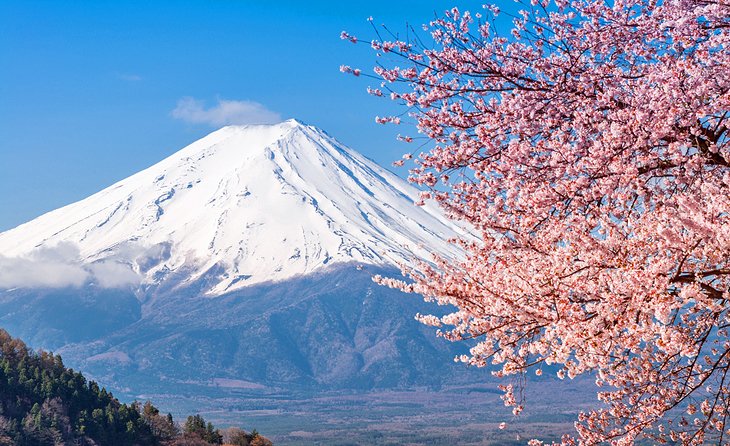Mount Fuji, Japan – Travel Tips
Category
Categories
Popular Articles

**Overview of the Destination**
Mt. Fuji, also known as Fuji-san, is an iconic symbol of Japan, known worldwide for its symmetrical snow-capped peak. Rising 3,776 meters above sea level, it is the highest mountain in Japan. This majestic stratovolcano is famed for its unparalleled beauty, varying dramatically with the four seasons. Needless to say, Mt. Fuji offers breathtaking views and a wealth of natural beauty, making it a must-visit for any travel enthusiast. Whether you’re climbing to the summit or simply admiring the mountain from a distance, Mt. Fuji promises an unforgettable travel experience.
**Best Time to Visit**
The best time to visit Mt. Fuji is between July and early September, during the official climbing season when all hiking routes are open. Be aware that this is also peak tourist season, so expect large crowds. For those who would rather admire the mountain from a distance and avoid the crowds, the off-season months of October and November offer crisp, clear weather and incredible autumn colours. Another popular event to plan around is the Fuji Shibazakura Festival held in mid-April through May, where the vibrant pink moss blossoms provide a stunning contrast to the mountain backdrop.
**Climate & What to Pack**
The weather around Mt. Fuji varies by season and altitude. Summers are quite warm at the base but can be chilly at the summit, even during the day. Winters can be quite cold, with heavy snowfall. Thus, layering is crucial no matter when you go. Essential items to pack include sturdy walking shoes, a waterproof jacket, thermal wear, hats, gloves and sunglasses, and don’t forget your camera to capture the stunning landscapes!
**Getting There**
The nearest airport is Tokyo’s Haneda Airport, which is about 110 kilometers away. From there, you can take the bus or train to various viewing spots around the mountain or to the starting point of the Mt. Fuji climb. Japan has a visa waiver agreement with around 68 countries. Therefore, it’s possible you won’t need a visa for a short-term stay. Please check the specifics for your country.
**Getting Around Locally**
Japan’s public transport is efficient and reliable. Buses and trains in the Mt. Fuji area are regular and comprehensive. The use of taxis is common, though more expensive. Renting a car could be an option for convenience but remember that Japan drives on the left side of the road. Walking is also a joy, given the beauty of the region.
**Safety Tips**
Japan is known for its low crime rate, and areas around Mt. Fuji are generally very safe. Climbers should check weather conditions before starting their ascend. Always respect cultural etiquettes; for instance, carry your rubbish away with you. Solo travelers should have no issues, though having a basic understanding of Japanese or a translation app can be very helpful.
**Top Things to Do & See**
Aside from climbing Mt. Fuji, other highlights include visiting the surrounding five lakes, known as the Fuji Five Lakes, each offering a unique vantage point of the mountain. Another hidden gem is the Aokigahara Forest at the base of the mountain. For a unique experience, visit an onsen (hot spring) in the area—many have open-air baths with direct views of Mt. Fuji.
**Where to Stay**
There are accommodations to suit every budget. For a luxury stay, consider the lakeside hotels offering breathtaking views of Mt. Fuji. Mid-range options include cozy bed and breakfasts and the many ryokans (traditional inns) in the Fuji Five Lakes region. For a budget stay, there are several mountain huts along the climbing route of Mt. Fuji.
**Food & Local Cuisine**
Japanese cuisine is a world-famous delight, and the Mt. Fuji region has some specialties you shouldn’t miss. The area is known for “Yamanashi Mochi”, a sweet rice cake, and “Houtou”, a noodle dish with vegetables and meat. Restaurants ranging from quaint sushi spots to street stalls can be found throughout the area.
**Cultural & Practical Tips**
The currency is the Japanese yen. While credit cards are widely accepted, it’s useful to have cash for smaller establishments. Plugs are Type A with a voltage of 100V. Free Wi-fi spots are available in some public areas. The language is Japanese and English may not be widely spoken.
**Sustainable or Responsible Travel Tips**
When visiting Mt. Fuji, it’s essential to respect the mountain and its surrounding environment. Stick to the designated paths while hiking, take your litter with you, and try to minimize your ecological footprint.
Finally, as a personal tip, try to rise early at least one morning to catch the breathtaking sight of the sunrise transforming the landscape. It’s a magical experience that vividly highlights why the Japanese consider Mt. Fuji a sacred place. Enjoy your journey to this majestic symbol of Japan.










